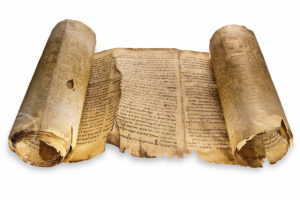 One of the strongest forms of proof for the reliability of Scripture and the truth of Christianity is fulfilled prophecy. More than 300 specific predictions were made in the Old Testament that were explicitly fulfilled by Jesus. This was some of the compelling evidence that led a young Josh McDowell from skepticism to faith and eventually resulted in his fantastically researched: Evidence that Demands a Verdict.
One of the strongest forms of proof for the reliability of Scripture and the truth of Christianity is fulfilled prophecy. More than 300 specific predictions were made in the Old Testament that were explicitly fulfilled by Jesus. This was some of the compelling evidence that led a young Josh McDowell from skepticism to faith and eventually resulted in his fantastically researched: Evidence that Demands a Verdict.
For generations, liberal, skeptical and Muslim scholars argued that many of these “predictions” were added in by the early church who changed and added to the text of the Old Testament to make it fit their Jesus. These arguments were difficult to disprove until 1947 because the final Old Testament text was assembled by the Jewish Masoretes around 950 A.D. In theory, there was plenty of time for changes to creep in.
But then, in 1947, a shepherd stumbled on a cave containing the Dead Sea Scrolls. Read that article from Bible.org for a thorough perspective on the significance of that find. Here are some relevant excerpts (emphasis added):

“The Dead Sea Scrolls provided further proof that the Old Testament canon existed prior to the third century B.C. Thousands of manuscript fragments from all the Old Testament books except Esther were found predating Christ’s birth, and some date as early as the third century B.C. For example, portions from the book of Samuel date that early, and fragments from Daniel date to the second century B.C.10 Portions from the twelve Minor Prophets date from 150 B.C to 25 B.C.11 Since the documents were found to be identical with our Masoretic Text, we can be reasonably sure that our Old Testament is the same one that the Essenes were studying and working from.
“One of the most important Dead Sea documents is the Isaiah Scroll. This twenty-four foot long scroll is well preserved and contains the complete book of Isaiah. The scroll is dated 100 B.C. and contains one of the clearest and most detailed prophecies of the Messiah in chapter fifty-three, called the “Suffering Servant.” Although some Jewish scholars teach that this refers to Israel, a careful reading shows that this prophecy can only refer to Christ.
“A significant comparison study was conducted with the Isaiah Scroll written around 100 B.C. that was found among the Dead Sea documents and the book of Isaiah found in the Masoretic text. After much research, scholars found that the two texts were practically identical. Most variants were minor spelling differences, and none affected the meaning of the text.
“One of the most respected Old Testament scholars, the late Gleason Archer, examined the two Isaiah scrolls found in Cave 1 and wrote, “Even though the two copies of Isaiah discovered in Qumran Cave 1 near the Dead Sea in 1947 were a thousand years earlier than the oldest dated manuscript previously known (A.D. 980), they proved to be word for word identical with our standard Hebrew Bible in more than 95 percent of the text. The five percent of variation consisted chiefly of obvious slips of the pen and variations in spelling.”7
